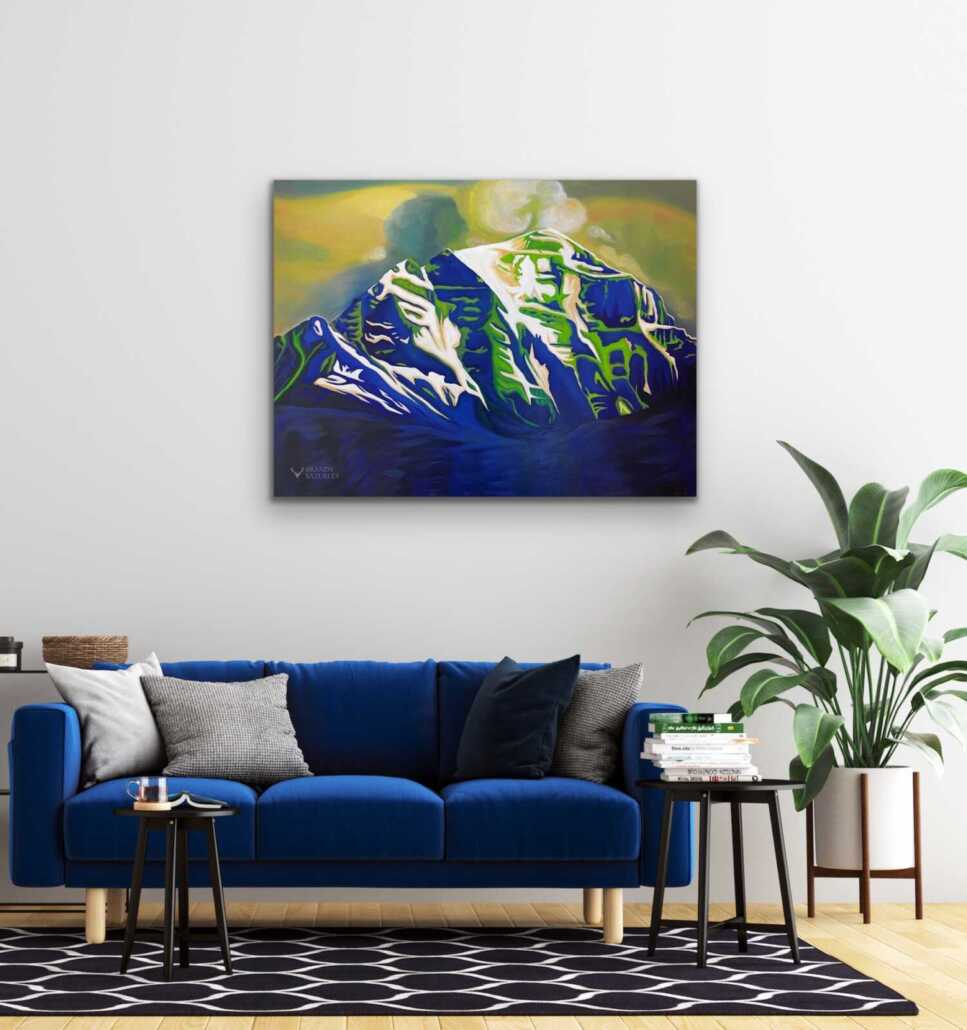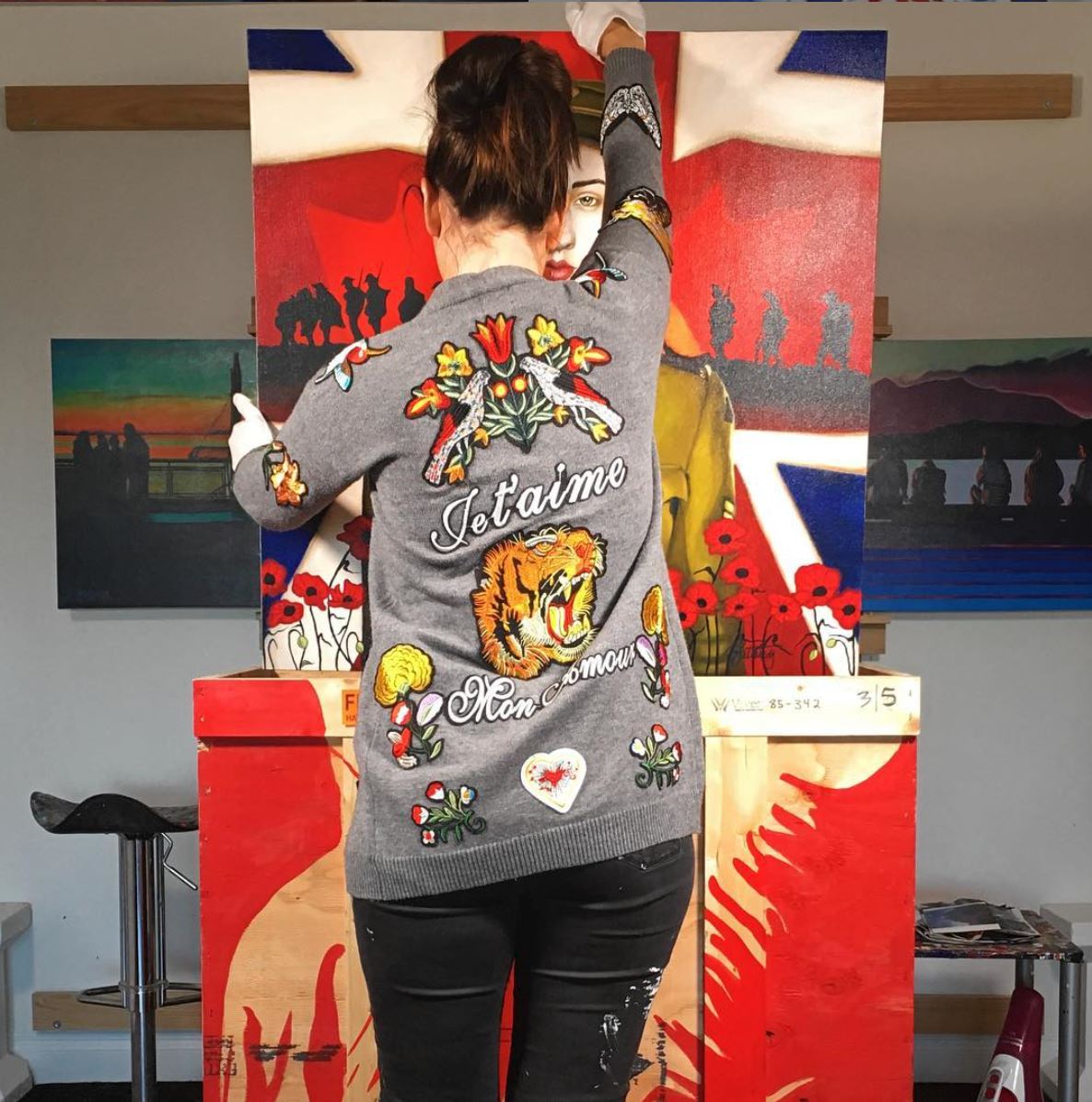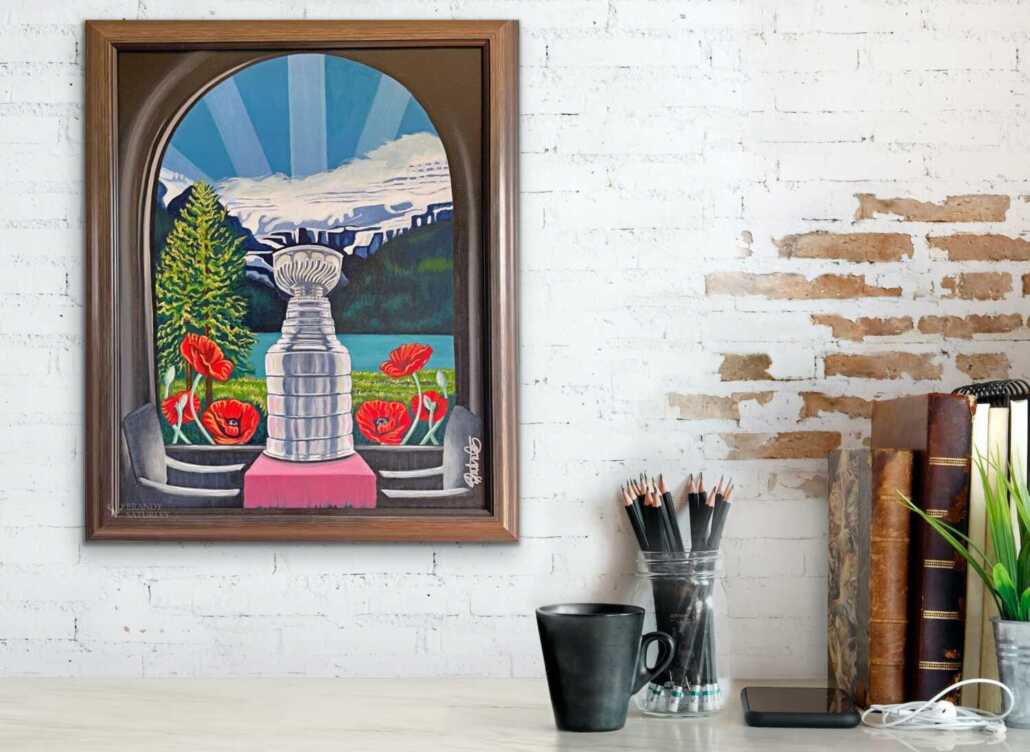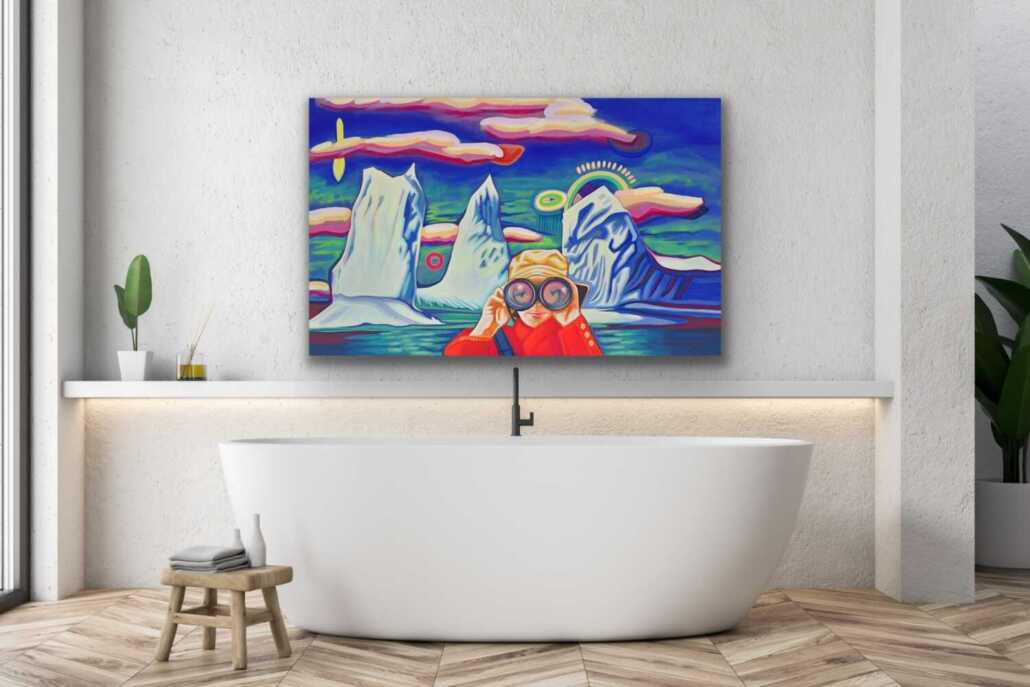Insider Tips: How to Care For Your Art Collection
Buying a painting can come with many concerns and questions, we have some insider tips on how to properly care for your art collection. While original artwork and paintings require care in handling, they are surprisingly easy to take care of, if you follow a few simple rules. As an artist I believe part of my job is to help my clients understand that original art, while valuable, should not be feared when it comes to hanging, displaying and dusting. There is no need to fear buying original art on canvas. Original art does not require a lot of upkeep, if you follow some simple rules. Paintings on canvas are easy to take care of, and should stay looking good for generations to come. Here are a few tips that can help keep you artwork in excellent condition.
1. Where to hang your painting
Paints are created using a variety of pigments. Some of them are natural pigments that naturally are susceptible to change depending upon the environment that they ‘live’ in so it is best to try to hang your paintings in places where they will be exposed to the most stable environment possible. It is not ideal to hang a painting over a radiator, fireplace or other source of heat. Also, the humidity of kitchens can be an issue with moisture in the air near cooking areas. Try not to hang a painting on a wall that received direct sunlight (the worst case is a wall where only half the picture sits in direct sunlight as half the painting will fade a to different rate to the other half!) Usually paintings will not show signs of fade for at least 75 years, even longer if you choose your display location wisely.
2. Handling your Artwork.
Try not to touch your new painting too much. Touching something delicate like an original painting is never good – the natural grease on (even the best washed) fingers will transfer to the art surface and leave a print which may not show up at first, but years later may start to become visible. While acrylics are more hardy and robust with their polymers and plasticity, they also must be respected and handled as little as possible.
A stretched canvas should be handled and placed with care. Always try to place a canvas painting on a level surface with nothing poking the canvas from behind. Even left for 5 minutes something poking the canvas can leave a stretch mark that could be there forever. If you do find that a stretch mark happens, whether from handling or from an unnoticed protrusion, this can be fixed easily by the artist or an art restorer.
3. Cleaning Acrylic or Oil Paintings
It is becoming increasingly common for artists to use water-based acrylic paints, like I do in my work. Because of the soft texture acrylics have, they tend to attract dust and dirt and hold them in place. In order to properly maintain a collection of acrylic paintings, it’s essential to know the best way to clean them without damaging the medium. Usually, a gentle dusting or wipe down will be enough to touch up most acrylic paintings. You can use a soft cloth, or fluffy headed brush much like a large cosmetics brush or a mild soap solution to clean your art.
The simplest way to clean up an oil or acrylic painting on canvas is to use a white cotton cloth soaked in a gentle soapy water; olive oil–based soap works wonders. Microfiber cloths are particularly lovely as they are soft and do not require much pressure on the canvas. You’ll be surprised to see how much grime comes off. For paintings with a more thick and visible texture, you might want to use Q-tips and work gently in crevasses.
If the painting still looks grimy, it’s better to see an art restorer that would use a stronger art cleaning product and may reapply pigment colors where need be. It’s surprising how a restored painting can show its true colors just by taking away the accumulation of cigarette or fireplace smoke. Again, when hanging your work smoke-free areas are ideal. If your oil painting shows paint flaking off, it is better to leave the cleaning and restoration to an art restorer. In my case I offer a lifetime service of cleaning and varnish update. If the collector is willing to ship the work to me, I will happily provide a complimentary clean and brush-up service.
Many times canvases have become loosened on the stretcher bars. A simple method to re-tighten the canvas is to spray water on the back of the canvas and leave the piece to dry in the sun for a couple of hours. Canvases are made of fabric and with time the weave has become loose. This process is safe and will not damage the painting itself.
4. Security
Do not be afraid of buying original art. If you love a painting then buy it. If it is not too expensive hang it where you want. If your art is expensive I suggest hanging it in a place with a more stable environment. For example, a hotel lobby behind reception desk is fine if you have 24hr security. There are also many secure and locking mechanisms for hanging wall art, this inhibits someone plucking the piece off the wall. If the piece is over $25,000 there are museum quality art security systems available, and of course insurance. In my own home and studio I have 24hr security – cameras, motion sensors, glass-break, fire and flood sensors in place. No matter where I am in the world I have the ability to view my security cameras and check in on my home and studio. Relatively inexpensive and better than most options on the market.
Most importantly enjoy your art, enjoy sharing it with friends, family and guests. I think it was Twyla Tharp that said, “Art is the only way to run away without leaving home” and we agree. Enjoy a mini-vacation now, while you browse our online art gallery. ~ The Art of Brandy Saturley





